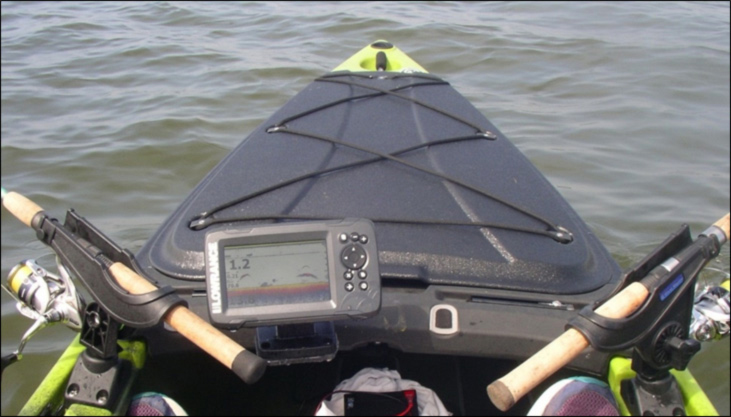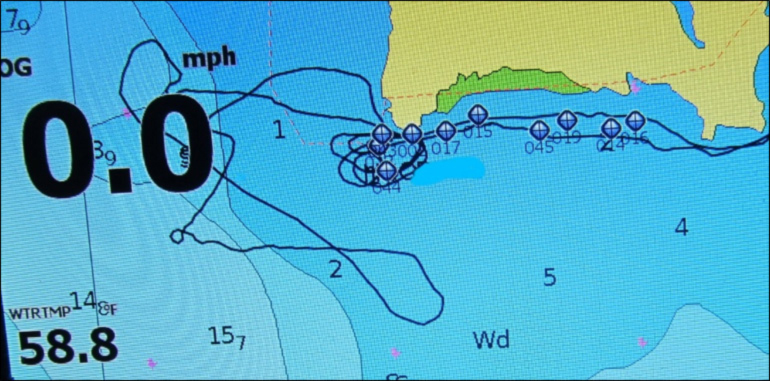Many kayak anglers have installed advanced fishfinder/GPS units with large screens, side-scan and down-scan capabilities, and advanced transducers, while others try to master kayak fishing without electronics. Some of the units people buy cost nearly as much as the kayaks themselves, and they require high-capacity batteries to keep them running over a full day. I have not added a fishfinder or GPS unit to the Manta Ray 11 kayak that I use most of the time — I try to keep that kayak simple, and in the shallow shoreline habitats I fish most often the electronics are not needed — but I have mounted electronics on my Native Ultimate FX 15 and several of my past kayaks.

Sonar features are not helpful in finding fish in the water column for much of the shallow water fishing that many kayak anglers enjoy. The transducer emits signals that move downward in a cone shape and when the signals hit the bottom or something suspended in the water column they bounce back to the surface, where they are received by the transducer. In shallow water the diameter of the cone remains small, such that you’ll be seeing an image only several feet wide. Sonar does a better job in deeper water. With a focus on water less than six or seven feet deep, seeing suspended fish is uncommon. However, the sonar tells you how the depth is trending (up or down), if you’re on an edge, or over a lump or hole.
Side-scan technology is impressive, when it is properly installed and the user learns how to interpret the views on the screen. It may make sense for those fishing from boats and even for some kayak anglers who have expensive kayaks. But for me, it is not an essential piece of equipment. I follow the “keep it simple” philosophy for my fishing and kayak rigging, and in order to see side-scan images at the same time as using the GPS or sonar views requires a considerably larger screen. The cost of a larger unit that offers decent quality side-scan would probably be higher than the value of many fishing kayaks and for some anglers, myself included, adding side-scan capability is an unnecessary complexity.
The GPS is actually more useful than most fishfinders for shallow water fishing in that it provides a map of the area, shows where you are, and leaves a line showing where you have been (called a trail). You can zoom the view in and out, and mark waypoints where fish are caught. By going back over those waypoints, you can focus your efforts on the most productive spots. Users can set up their screens to superimpose digital data readings which can also be helpful. I typically display depth, speed over ground, and water temperature.

VHF radios are another important piece of electronics. It’s important to be able to communicate when you are on the water and I always carry my cell phone inside a zippered pocket on my fishing shirt. But when I fish in the same area with other fishing buddies, I bring along a waterproof VHF handheld radio, too. A VHF radio can give weather updates or emergency alerts. I can also tuck the radio in a pocket of my PFD or set it somewhere else in the kayak. The radio allows me to keep in communication and in addition to serving as a safety measure, it allows us to talk among ourselves to tell what fish we have caught and what lures are working that day. If one guy finds fish, he can call over the others to join in the fun.
This article includes excerpts from author John Veil’s new book, “The Way I Like to Fish – A Kayak Angler’s Guide to Shallow Water, Light Tackle Fishing” ($17.99 black and white or $34.99 in full color), or you can email John at [email protected] to order it for substantially less.